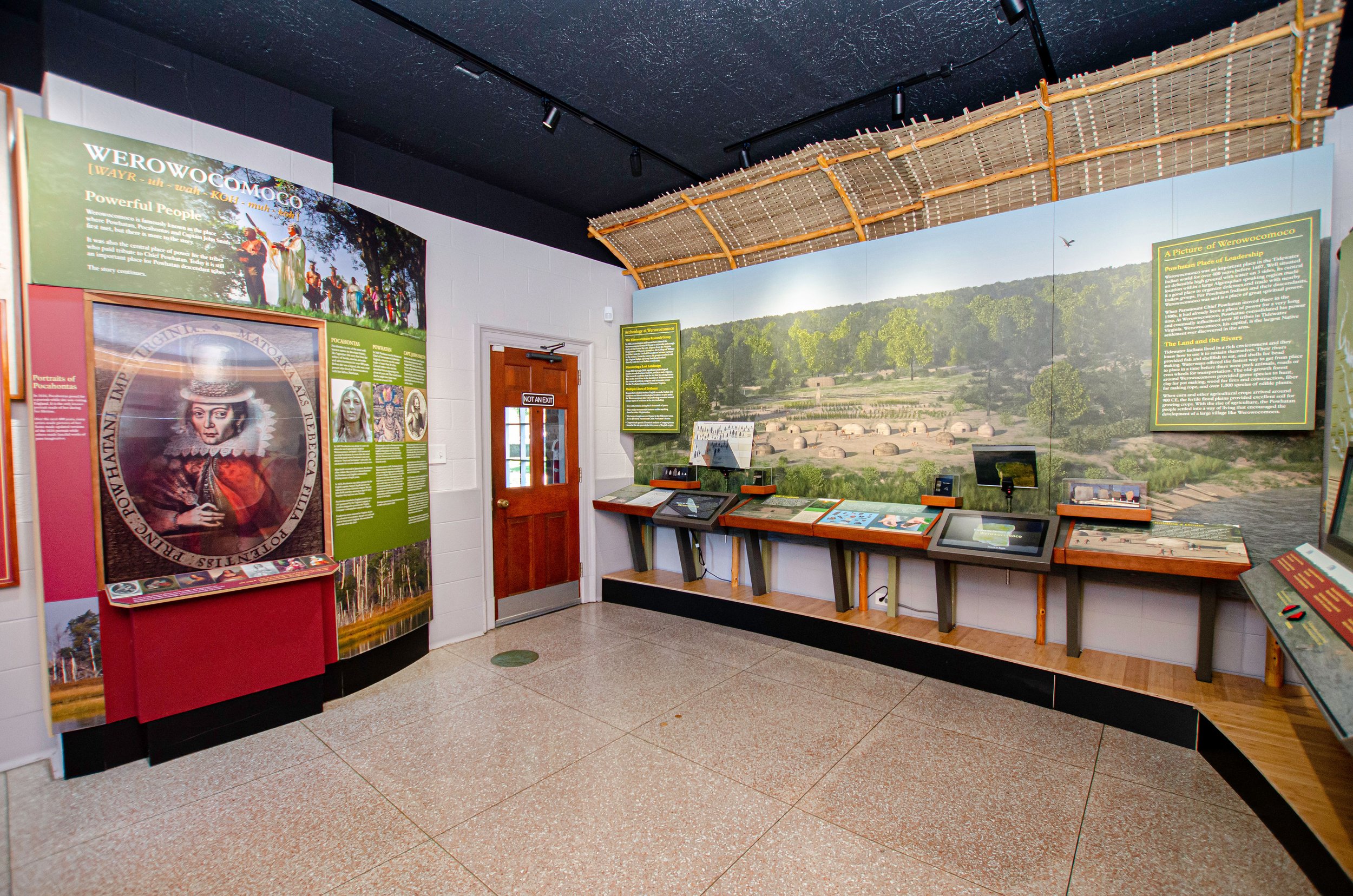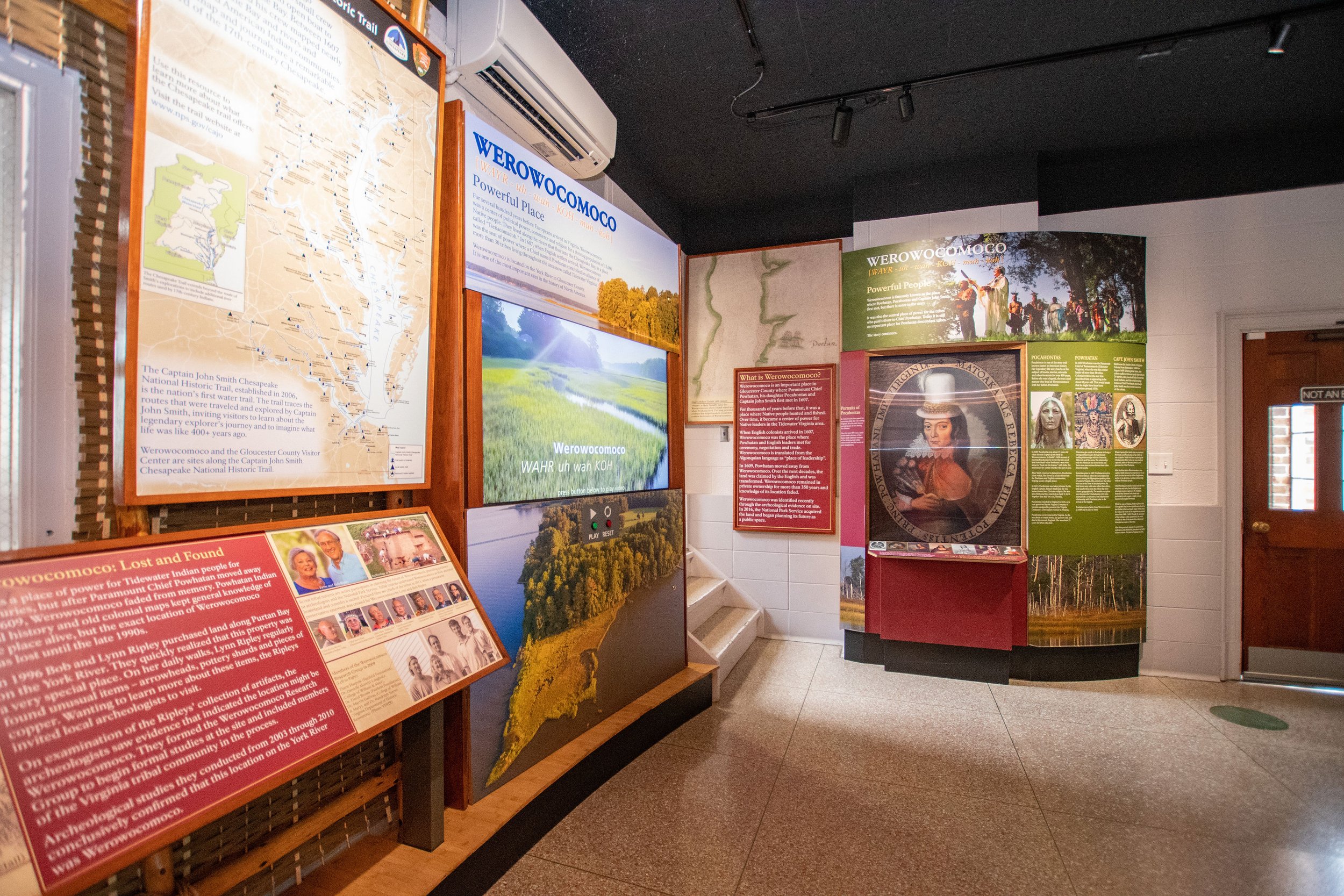Uncovering the Native American Threads of Gloucester, VA: A Journey through History
John Rolfe (1585-1622) English Settler in Virginia)
John Rolfe was one of the first English settlers in Virginia. He went to the colony of Jamestown around 1610 and is credited with developing the strain of tobacco that became Virginia's staple crop. In 1614 he married the Indian Princess Pocahontas, whom he later took to England. After her death in 1617, Rolfe returned to America, where he was killed in a war with the Powhatan Indians in 1622.
Pocahontas (1596-1617) : American Indian Princess
Pocahontas was said to be a beautiful and intelligent Indian Princess. The daughter of the Indian Chief Powhatan, of the POWHATAN confederacy of Virginia. Her personal clan name was Matoaka. In 1608, John Smith, one of the founders of the Jamestown settlement in Virginia, was captured by the Indians and brought to Pocahontas’s village.
Photograph: www.pbs.org/NOVA
According to John Smith's account and his General History of Virginia, Pocahontas saved his life by placing her head over his body to protect him, when Powhatan was about to kill him. The site at which Pocahontas saved the captain is located in Gloucester County: it is generally agreed that it did occur on the north bank of the York River near Werowocomoco.
The Indian princess became the intermediary between the Englishman and her father. She persuaded him to provide food to the starving colonist and at the risk of her own life, she warned the men of dangers end of planned Indian attacks. In 1613, Pocahontas was taken captive by Captain Samuel Argall and taken to Jamestown, in an effort to force Powhatan to keep the peace. During her captivity she learned the foundations of Christianity and became a Christian period as a Christian she took the name Rebecca. The following year, with her father's consent she married john ralph, a tobacco planter.
This began an 8-year period of peace between the Indians and colonists. Thomas was born to the couple in 1615. Pocahontas traveled to England with her husband in 1616, where she was received as royalty, she captivated the London society. During her preparation to return to America, she became ill of smallpox and died in Gravesend, England in March 1617.
Powhatan (1547-1618) Chief of the Powhatan Confederacy
Powhatan was the father of Pocahontas and an intimate friend of Captain John Smith and John Rolfe. At the time of the English settlement of Jamestown 1607, Powhatan was consolidating 30 or more tribes to the confederacy from his capital, Werowocomoco, on the Pamunkey River, land which later became Gloucester and Matthews counties. Records have shown that he ruled the tribes in 8,000 square miles of the country, with 8,000 subjects, of whom about 2,400 were fighting men. Without written laws, or agreements, this mighty savage leader reward with wisdom and foresight beyond his time.
Powhatan was initially friendly to the English colonist, but upon learning that John Smith was interested in metals and in finding a waterway leading to the western ocean, Powhatan perceived the English is dangerous and decided to remove them from his territory. When Smith was captured by the Indians at Werowocomoco, Pocahontas is said to have saved Smith's life, in all probability saving there by the life of the Jamestown colony.
Powhatan’s Chimney
According to Gloucester legend, this chimney is all that remains of the house built by captain John Smith for Indian Chief Powhatan 1609. The collapse of this chimney in an 1888 storm gave impetus to the preservation movement in Virginia. Concern Virginians banded together in Williamsburg, Norfolk, and Richmond. They were determined to save other historical structures and sites from similar fate period from their efforts came the organization of the association of the Preservation of Virginia's Antiquities. The present structure was rebuilt in the 1930s by the Joshua Brian branch of the APVA.
Information provided by historical marker located on-site.
Werowocomoco Indians
Most of the Indians were members of the great family called Algonquins, scattered among forty villages. The more familiar names to the average reader are the Pamunkey and Mattaponi, who live in king William county: the Chickahominy Indians in Charles city and New Kent.
The Werowocomoco Exhibit is located in the Gloucester Visitor Center, 6504 Main Street. Here visitors can interact with virtual artifacts, learn about Pocahontas, and the proposed National Park: Werowocomoco
The early Virginia Indians were tall, well-built people, with red or copper colored skin and dark piercing eyes. Their hair was coarse, straight, and black, but they had no beards. The women wore their hair in long braids down their backs. The men cut their hair on one side and left it long on the other side. They wore no clothing, but in winter wore garments made of bird feathers or animal skins. Often, they would stain or tattoo their bodies with plant juices. They lived in huts or wigwams. Furniture consisted of bark mats or beds and crude utensils. Their most important crop was maize or Indian corn. Other crops included pumpkins, peas, squash, apples, and tobacco, which they use for medicine and religious services as well As for smoking. Religion was very important part of their lives, and their worship of God Okee, was carried out with sacrifices and other acts. Boy the girls were trained to observe nature, learn the use of plants, and endure hardships.




